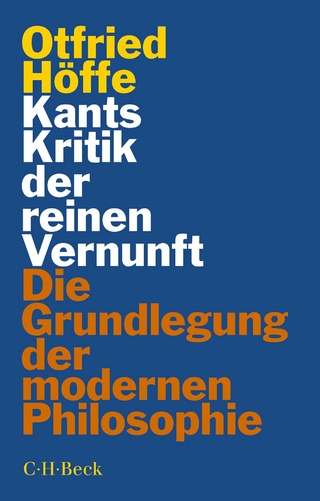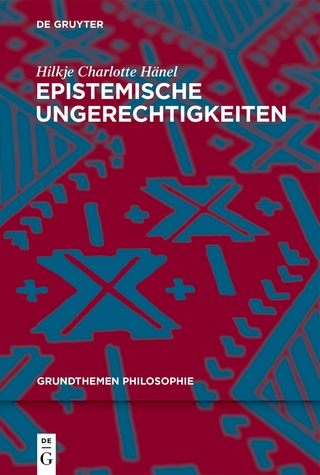
Argumentation in Everyday Life
SAGE Publications Inc (Verlag)
978-1-5063-8359-0 (ISBN)
"Good coverage of concepts with understandable explanations of theory. Very user friendly with exercises to use in and out of class. Connects well with other communication classes through the application of other communication concepts to argumentation."
—Christopher Leland, Azusa Pacific University
Argumentation in Everyday Life provides students with the tools they need to argue effectively in the classroom and beyond. Jeffrey P. Mehltretter Drury offers rich coverage of theory while balancing everyday applicability, allowing students to use their skills soundly. Drury introduces the fundamentals of constructing and refuting arguments using the Toulmin model and ARG conditions (Acceptability, Relevance, and Grounds). Numerous real-world examples are connected to the theories of rhetoric and argumentation discussed—enabling students to practice and apply the content in personal, civic, and professional contexts, as well as traditional academic debates. Encouraging self-reflection, this book empowers students to find their voice and create positive change through argumentation in everyday life.
Unique resources to help students navigate this complex terrain of argumentation:
"The Debate Situation" offers students a birds-eye view of any given debate (or exchange of arguments between two or more people) organized around three necessary components: arguments, issues, and the proposition. The visual model of the debate situation illustrates how these features work together in guiding a debate and it lays the groundwork for understanding and generating arguments.
Easy to Use Standards for Evaluating Arguments combine a prominent argument model (named after logician Stephen Toulmin) with a standards-based approach (the ARG conditions) to test of quality of an argument. The ARG conditions are three questions an advocate should ask of an argument in determining whether or not it is rationally persuasive. These questions are best served by research but don’t necessary require it, and thus they provide a useful posture for critically assessing the arguments you encounter.
Multiple "Everyday Life" examples with an emphasis on context help students to connect the lessons more fully to their everyday life and encourages them to grapple explicitly with dilemmas arising in different contexts.
"Find Your Voice Prompts" focus on choice & empowerment to offer strategies for students to choose which arguments to address and how to address them—empowering students to use argumentation to find their voice.
"Build Your Skill Prompts" use objective applications to test how well students have learned the information. They offer a chance to apply the material to additional examples that students can check against the answers in Appendix II.
Two application exercises at the end of each chapter encourage students to think critically about the content, discuss their thoughts with their peers, and apply the material to everyday situations.
Jeffrey P. Mehltretter Drury (PhD, University of Wisconsin-Madison; MA and BA, Northern Illinois University) is an Associate Professor of Rhetoric at Wabash College, an all-male liberal arts college in Crawfordsville, Indiana. As an undergraduate student, Drury competed in intercollegiate policy debate for four years before coaching the team as a master’s student. Since 2003, Drury has taught courses in argumentation and debate at four different institutions. His research, which considers representations of self and others in political argumentation, has appeared in journals such as the Western Journal of Communication, the Journal of Contemporary Rhetoric, and Voices of Democracy. In 2014, he authored Speaking with the People’s Voice (Texas A&M University Press), an analysis of the argumentative forms modern U.S. presidents use when they invoke public opinion in their nationally televised speeches.
Preface
Acknowledgments
Part I: A Framework for Argumentation and Debate
Chapter 1: Introduction to Argumentation and Debate
Argument, Debate, and Controversy
Why Study Argumentation?
Audiences and Co-Arguers
Spheres of Argument
Summary
Application Exercises
Chapter 2: The Debate Situation
Arguments
A Proposition
Issues
The Debate Situation
Summary
Application Exercises
Chapter 3: Argumentation Ethics & Stances
Argumentation and Debate Ethics
Argumentation Stances
Summary
Application Exercises
Part II: Constructing Arguments
Chapter 4: Understanding Argument Structures
Formal Logic vs. Everyday Argumentation
Strategies for Identifying Arguments
Strategies for Understanding Arguments
Summary
Application Exercises
Chapter 5: Effectively Supporting Claims
The Allure of “Evidence” and the Significance of “Support”
Gathering and Testing Information
Types of Support
Strategies for Using Support
Summary
Application Exercises
Chapter 6: Common Argument Types
Applying the Types of Argument to Everyday Life
Argument from Classification
Argument from Generalization
Argument from Cause and Consequence
Argument from Sign
Argument from Analogy
Argument from Authority
Additional Argument Types
Summary
Application Exercises
Chapter 7: Building Effective Cases
Debating Fact Propositions
Debating Value Propositions
Debating Policy Propositions
Summary
Application Exercises
Part III: Contesting Arguments
Chapter 8: Generating Productive Clash
A Productive Posture for Clash
Anticipation
Refutation
Ending Productively
Summary
Application Exercises
Chapter 9: Evaluating Arguments & Cases
The A Condition: Acceptability
The R Condition: Relevance
The G Condition: Sufficient Grounds
Applying the ARG Conditions through Refutation
Argument Fallacies & The ARG Conditions
Evaluating Cases and Controversies with the ARG Conditions
Summary
Application Exercises
Chapter 10: Evaluating Argument Types
Evaluating Argument from Classification
Evaluating Argument from Generalization
Evaluating Argument from Cause and Consequence
Evaluating Argument from Sign
Evaluating Argument from Analogy
Evaluating Argument from Authority
Uncovering the ARG Conditions in Everyday Argumentations
Summary
Application Exercises
Part IV: Applied Argumentation And Debate
Chapter 11: Crafting Verbal and Oral Arguments
Audience Analysis and Adaptation
Style
Oral Delivery
Summary
Application Exercises
Chapter 12: Formats for Everyday Public Argumentation
Op-Eds and Letters to the Editor
Public Online Argumentation
Public Deliberation
Summary
Application Exercises
APPENDICES
Appendix I: Formats for Academic and Competitive Debate
Parliamentary Debate
Policy Debate
A Note about Notetaking (or “Flowing”)
Moot Court
Appendix II: Answers to Build Your Skill Prompts
Appendix III: Glossary
Index
About the author
| Erscheinungsdatum | 25.02.2019 |
|---|---|
| Verlagsort | Thousand Oaks |
| Sprache | englisch |
| Maße | 187 x 231 mm |
| Gewicht | 620 g |
| Themenwelt | Schulbuch / Wörterbuch ► Wörterbuch / Fremdsprachen |
| Geisteswissenschaften ► Philosophie ► Erkenntnistheorie / Wissenschaftstheorie | |
| Geisteswissenschaften ► Sprach- / Literaturwissenschaft ► Sprachwissenschaft | |
| Sozialwissenschaften ► Politik / Verwaltung ► Europäische / Internationale Politik | |
| ISBN-10 | 1-5063-8359-9 / 1506383599 |
| ISBN-13 | 978-1-5063-8359-0 / 9781506383590 |
| Zustand | Neuware |
| Informationen gemäß Produktsicherheitsverordnung (GPSR) | |
| Haben Sie eine Frage zum Produkt? |
aus dem Bereich

![Was heißt Denken?. Vorlesung Wintersemester 1951/52. [Was bedeutet das alles?] - Martin Heidegger](/media/113619842)
